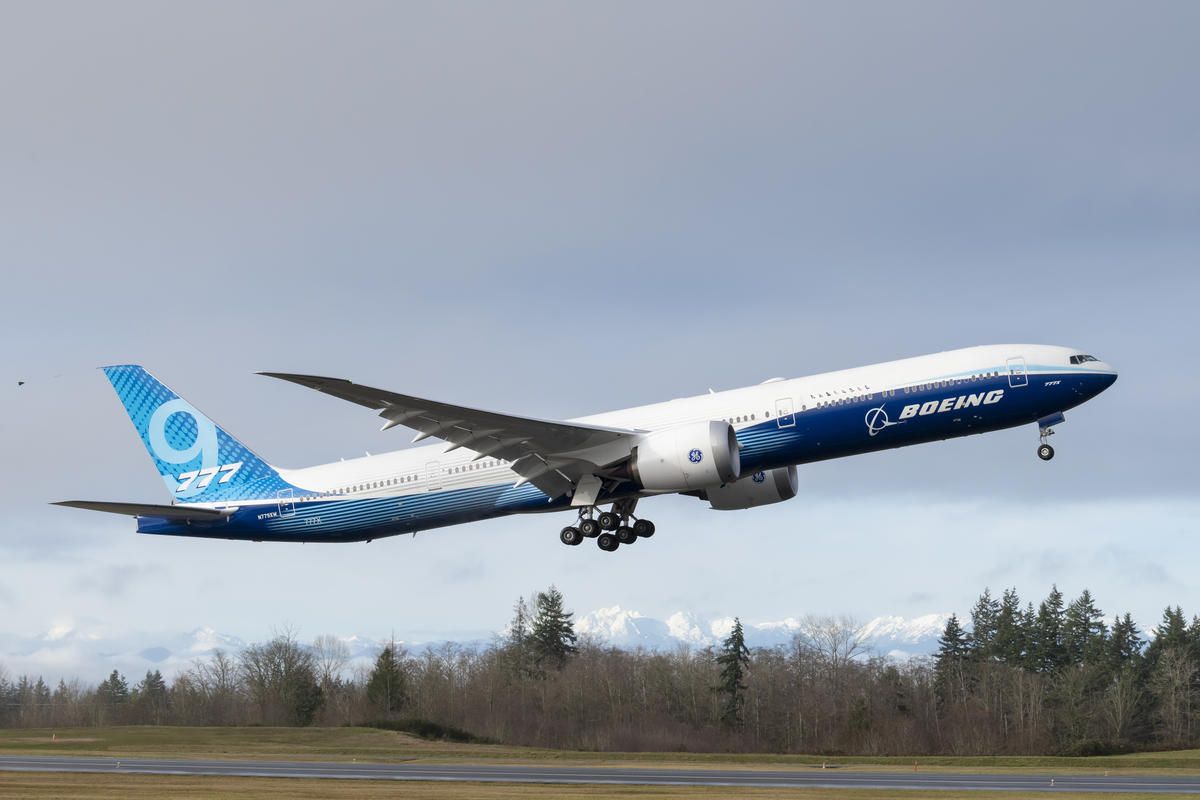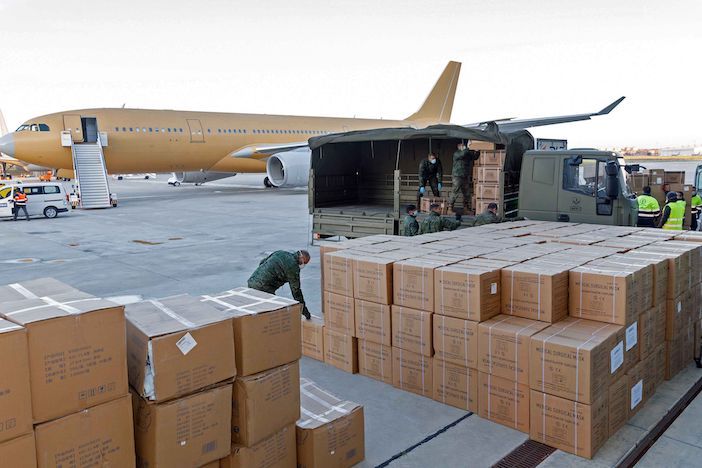The world’s two largest aircraft manufacturers are reducing production rates and cutting jobs to deal with the Covid-19 pandemic, while their major flight test programs remain ongoing.
In briefings given around the financial reports for the first quarter of the year held this week, the firms outlined how aircraft production and jobs are being cut to help the businesses remain viable during the Covid-19 crisis.
Despite the drastic measures, flight test programs are continuing at both companies.
Boeing confirmed this week that it is making progress on its 777X, 737 MAX 10 commercial aircraft development programs as well as on its CST-100 Starliner spacecraft. Its defense programs, such as the MQ-25 Stingray refueling drone, T-7A Red Hawk jet trainer and the MH-139A Grey Wolf helicopter are also ongoing.
Meanwhile Airbus is continuing operations from its Toulouse Flight Test Operations Center and using test aircraft to airlift shipments of medical supplies around the world.
Production plans
Airbus and Boeing have both reported that airlines are delaying purchases for new aircraft and that deliveries of completed airplanes have been disrupted by virus-related travel restrictions.
However, after stopping manufacturing activities to various degrees, both companies have reopened factories with enhanced health and safety measures in place. Airbus reopened most of its sites throughout Europe in late March, while Boeing has more recently resumed operations in the USA at sites including Puget Sound, South Carolina and Philadelphia.

Airbus has reduced production rates to roughly a third of its pre-crisis average and is now producing 40 A320s per month, two A330s and six A350s. The A220 factory in Mirabel, Canada, is expected to return to a monthly rate of four aircraft.
Labelling the Covid-19 pandemic “the gravest crisis the aerospace industry has ever known”, Airbus CEO Guillaume Faury said, “We’re adapting production rates in line with customer demand, concentrating on cash containment and our longer-term cost structure to ensure we can return to normal operations once the situation improves.
“We’re focused on the resilience of our company to ensure business continuity.”
Boeing plans to gradually resume 737 MAX production this year towards a rate of 31 planes per month during 2021, while 787 production will be 10 per month in 2020 reducing to 7 per month by 2022. The combined 777 / 777X production rate will be restricted to 3 per month next year, while a “measured approach” will be taken to 777X ramp up rate. The 767 and 747 production rates will remain unchanged.
Job cuts
The companies have also taken action to shore up their finances and indicated that they believe recovery to post Covid-19 rates of production and profitability will take a long time.
In a letter to Boeing employees issued this week Boeing president and CEO Dave Calhoun said that management would be cutting the workforce by 10% through voluntary layoffs, natural turnover and involuntary layoffs.
Calhoun said, “The ongoing stability of our defense, space and related services businesses will help us limit the overall depth of the cut.
“Our industry and our company will get through this. Air travel has always been resilient over the long term, and our portfolio of products, services and technology is well-positioned for the recovery that will come.
Meanwhile, in a letter seen and reported on by Bloomberg, Faury also warned Airbus employees that job cuts may have to be made for the company to survive the pandemic.
The delivery of new aircraft and production rates are taking hit, with immediate consequences for Airbus and Boeing’s businesses and employees. Some R&D is being scaled back, such as Airbus and Rolls-Royce’s E-Fan X, which was cancelled this week.
But reassurance can be taken from Airbus and Boeing’s continuation of flight testing and aircraft development projects, as well as from similar activity elsewhere in the industry. The longer term future of the aerospace sector is viable and the industry is looking forward to the end of the pandemic.





